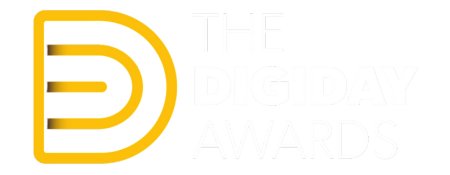Late Summer Social Media Trends CPG Brands Need to Know in 2025
In our last deep dive on trends, we explored all things early summer: Graduation, Memorial Day, Mother’s Day, and Father’s Day, and the corresponding trends that brands can tap into on social media to capture consumers’ attention (and dollars) around these tentpole moments.
That’s just the start. Around the corner is also summer travel, Pride Month celebrations, and ramping up for back-to-school and back-to-college season—each with their own emerging content styles and trends that brands can tap into to be an authentic part of these cultural touchstones.
It’s also important to understand the lifecycle of a trend (the phases each theme or movement goes through), so brands and marketers can effectively decide when to engage and when to exit gracefully to avoid seeming late to the party, or worse, inauthentic. Keep reading for insights into late summer trends, content themes, influencer selection and editing strategies, and program activation timing to make the most of the season and its social commerce dollars.
Summer Travel Trend Insights
It should come as no surprise that travel content will be taking over social feeds this summer. But, 2025 will see consumers being more budget-conscious and smart with their travel budgets, compared to the post-COVID travel spending boom we’ve seen in recent years. With 57% of Americans planning to take longer trips in 2025 than in 2024, consumers are still eager to explore but are making budget-conscious, experience-driven decisions. Influencers are responding by blending aspirational and attainable travel content.
Themes to Leverage for Summer Travel Content
Rise of the road trip: Road trips have been popular since the days of Route 66, thanks to the affordability, flexibility, and sense of adventure that come with this type of travel. Gas station hauls, car-friendly travel hacks, and on-the-road ‘Get Ready with Me’ videos are naturally booming as consumers want to make their travel dollars go further on the road. The Van Life mindset is also influencing mainstream travel with influencers transforming vehicles into mobile homes and taking audiences along for the ride. This trend creates opportunities for brands to partner with influencers on road trip snacks, highlight personal care essentials like dry shampoo and sunscreen, and tap into car organization trends with trunk essentials, emergency kits, and storage solutions.
Layover adventures: Gone are the days of dreading layovers as a necessary evil on the way to a better time. Travelers are turning layovers into mini vacations, maximizing their time with quick city tours, airport dining recommendations, and refresh routines. Personal care brands can own every "freshen up at the airport" moment with hydration sprays, face wipes, and travel skincare, while snack brands can position themselves as the best on-the-go option for travelers.
Multi-tripping: For those looking to spend their budget and PTO mindfully, smaller getaways are more enticing than large trips. These consumers are looking for destinations that offer unique, budget-friendly experiences such as a quick weekend road trip or an extended cross-country drive that stops in several states.
‘Coolcations’: Coolcations are just like they sound—taking trips to destinations with cooler temperatures for travelers seeking relief from extreme heat. Cooler destinations also tend to have fewer tourists, making them more accessible and leisurely. Think: taking on a ski town in the off-season. Brands that normally dip in sales in the summer could take advantage of this trend to show how their products work outside of winter.
‘Pack With Me’ & Travel Organization: The best place for packing inspiration and advice? Social media. Audiences love seeing efficient packing, travel-friendly essentials, and space-saving solutions, creating opportunities for brands to showcase their products in "must-pack essentials" lists, from travel-sized items for carry-ons to full-size options for checked luggage.
Selecting Influencers and Editing Strategies
The type of content creators you work with and when you work with them is just as (if not more) important as the content themes you center a social media activation around. Travel content works best with influencers that are already known for making immersive content:
Young adults on girls’ trips: Showcasing weekend getaways and travel must-haves.
Mommy bloggers: Packing for family vacations and kid-friendly road trip ideas.
Budget travel influencers: Affordable tips showing how to make the most of every trip.
Luxury & wellness travelers: Elevating layovers and skincare for long-haul flights.
Solo travelers and digital nomads: Emphasizing convenience and travel essentials when traveling alone.
Immersive creators have also honed in on the best editing strategies for travel content, so keep these edits in mind when setting up your activations. Consider fast-paced, cinematic edits that use smooth transitions and short, punchy cuts to keep the energy high and stop social scrollers in their feeds. A mix of drone shots and close-ups can capture both the grand scale and intimate details of a travel experience. For a deeper storytelling approach, try narrative-driven vlogs interwoven with b-roll footage. “Day-in-the-life” formats are incredibly popular on TikTok for putting viewers in the shoes of the creator, showing the minute parts of their journey with shots of packing, spontaneous moments, and itineraries.
Activation Timing for Summer Travel Campaigns
Timing is everything. Here’s when brands should pulse into these conversations:
Summer road trips & vacations (May-August): Peak season for travel content.
Holiday weekend travel (July 4th/Labor Day): Quick family getaways.
College campus visits (May-July): Parents and students on the road.
By tapping into these evolving travel behaviors and producing content that is informative and entertaining, brands can stay at the forefront of the 2025 travel conversation.
Pride Month Insights
According to a survey by YouGov, 75% of consumers believe that a brand’s activity around Pride Month is merely a PR play rather than a true act of solidarity or sincerity. They don’t just want rainbow logos in June; they want to see a genuine, year-round commitment to inclusivity and support. Today’s consumers want to experience authentic representation that acknowledges them as whole people—not just their sexual orientation or gender identity. Pride marketing should reflect the full depth of their lives, moving beyond clichés and stereotypes.
Key Content Themes for Pride Month
If this is an area that is important to your brand, hopefully you find some value in these key content themes.
Pride through the lens of everyday life: Pride isn’t just a festive parade that comes once a year. Pride is parenthood, career journeys, friendships, and self-care—an essential part of many individuals’ lives. Content through this ‘lens’ including Get Ready with Me’s for Pride events, job interviews, and more; vlogs showing everyday life; and videos capturing milestone moments like wedding planning, adoption journeys, and coming out stories.
Bold, interactive Pride party trends: Pride celebrations are becoming full-on, immersive experiences with engaging content to match. Trends include DIY pride parties with charcuterie boards and cocktails, Pride parade prep, and transformation reels inspired by drag culture.
Before and after glow-ups: Pride transformation and self-love content could include then versus now videos highlighting personal journeys, makeover tutorials focused on building confidence, and fitness and wellness journeys that promote self-love.
Supporting LGBTQIA+ businesses and community initiatives: Consumers want brands to put their money where (they say) their values are. Consider featuring queer-owned brands in influencer partnerships, sponsoring Pride events, scholarships, or advocacy programs, and highlighting unsung heroes during Pride months and beyond.
Selecting Influencers and Editing Strategies
Authenticity is everything to ensure your brand doesn’t come across as a participant in “rainbow washing”. The most effective Pride content will come from partnerships with creators who build connection and trust:
LGBTQIA+ families and parents sharing their daily lives
Beauty and fashion creators showcasing bright and bold Pride looks
Activists and educators leading discussions on Pride history and advocacy
Lifestyle and party planners offering Pride party DIYs, decor ideas, and entertainment tips
Two distinct editing strategies will align best with Pride Month activations. One is focused on fully embracing rainbow aesthetics with saturation to make each video clip pop. The other is focused on real, raw stories—blending documentary style footage of interviews with slow-motion shots of celebrations, to give space for emotional pauses and impactful captions.
Pulse Periods for Consideration
Brands that show consistent support and inclusivity throughout the year will establish meaningful connections with the LGBTQIA+ community. Consider these pulse periods to show your brand’s support now and throughout the year.
March 31, Transgender Day of Visibility: Highlight and share stories from trans voices.
May 17, International Day Against Homophobia, Biphobia & Transphobia: Stand up against discrimination and hate.
June, Pride Month: Celebrate and engage with the LGBTQIA+ community.
October 11, National Coming Out Day: Uplift authentic personal stories.
October, LGBTQIA+ History Month: Educate consumers and honor the history and trailblazers of the community.
Back-to-School Trend Insights
The end of summer always marks the rush of back-to-school. While a huge retail moment for brands, it’s a much deeper time period for parents, caregivers, and educators who want to set their kids up for a successful year ahead. With 57% of parents saying their kid influences their back-to-school purchases, brands that go beyond school checklists and tap into the emotions, routines, and creativity of the season will stand out.
Key Content Themes for Back-to-School
Teacher classroom setups and organization: Educators are transforming learning spaces into engaging experiences. Content trends will show teachers documenting their classroom transformations in the weeks before school starts, highlighting organization tools, décor, and practical products. Other themes to consider include teachers turning rooms into “Starbooks” for book tasting, space stations for STEM, or an airplane for geography.
Getting kids involved: Kids want a say in their back-to-school purchases, and brands that gamify this experience will win. “This or That” videos can show kids choosing between backpacks, lunchboxes, or outfits, turning decision-making into entertainment. “Shop With Me” POVs depict influencers going into a retailer and showcasing their budget-friendly finds and must-have products.
Food and drinks: An evergreen trend, TikTok and Instagram are flooded with visually satisfying lunchbox-packing videos, featuring creative meal ideas and time-saving solutions for busy families. Meanwhile, ASMR-style content showcases after-school snack prep, lunchbox zipper pulls, and packaging crinkles to drive significant engagement.
Beyond the school day: Every parent knows back-to-school expands far beyond the classroom. Brands should consider how their products can play a natural role in We want to think about extracurricular activities, after-school routines, and social moments happening before and after school.
Selecting Influencers and Editing Strategies
Brands have a range of voices to tap into to make their back-to-school campaigns an A+:
Teachers and educators: Spotlighting their must-have classroom and learning tools.
Parents and caregivers: All about shopping, routines, and making the first day awesome.
Grandparents and daycare workers: Sharing their unique takes on early learning and after-school fun.
Youth sports coaches and mentors: Talking school-life balance, teamwork, and keeping kids motivated.
Child development experts and therapists: Focused on sensory-friendly ideas and emotional wellbeing.
When it comes to editing strategies, "This or That" videos are a great way to engage audiences by showcasing school supplies like backpacks and lunch boxes in a quick, split-screen format with fast cuts and transitions, asking viewers to pick their favorite. You can also utilize stop-motion to creatively showcase how to organize school supplies or arrange a classroom.
Activation Timing for Back-to-School Campaigns
Looking beyond the traditional back-to-school window, brands should consider these key pulse points for timing their social media and influencer campaigns:
Tax-Free Weekend (varies by state): The biggest back-to-school shopping rush.
Teacher Appreciation Week (May): A prime moment to recognize and reward educators.
Fall fashion and shopping (August/September): The shift from summer wear to back-to-school essentials.
Back-to-College Trend Insights
Over 19 million students were enrolled in college and graduate school at the start of the 2024-2025 school year. That’s millions of consumers looking to create a “home away from home” experience, shopping for much more than typical back-to-school supplies. They need dorm aesthetics, tech upgrades, and essentials to fuel both academics and social life. The majority of these shoppers are Gen Z and their parents, making influencer-driven content a key driver for product discovery and decision-making. With households spending 170% more per college student than K-12 shoppers, brands that blend nostalgia with Gen Z’s need for convenience and personalization will resonate most.
Emerging Content Themes for Back-to-College
Dorm and apartment transformations: Dorm room before-and-after reveal videos highlighting space-saving storage, cozy decor, aesthetic lighting, and dorm essentials hauls are popular content for students moving into dorms. Highlight affordable, multipurpose dorm products that are both practical and stylish.
Tech upgrades and study must-haves: For Gen Z, tech is a critical part of school and social life. They want to see tech unboxings of must-have gadgets and academic tools. Give them inspiration for their study spaces with desk setups and smart lighting.
“Adulting 101” content: Gen Z is driven by convenience, preferring bulk shopping and easy solutions to make their lives at college easier. Consider how you can highlight college survival kits with must-have snacks and cleaning supplies. Get nostalgic with “What Mom Had in College vs. What I Have Today” like landlines versus smartphones.
Selecting Influencers and Editing Strategies
College students want to see people like them sharing stories and content that they can relate to.
College students & campus ambassadors: Share authentic, relatable content from real students.
Recent grads & young professionals: Provide advice-based content on navigating freshman year.
Tech & lifestyle influencers: Showcase gadgets and smart dorm upgrades, and study tips and tricks.
Dorm room transformations (before & after): Use a split-screen effect to show before-and-after shots of the dorm room or study space transformation. Include fun time-lapses of the process to show the progression.
Engaging tech & study hauls: Showcase unboxing content with fun jump cuts and overlays to highlight cool tech features. Use upbeat background music, followed by a close-up of each tech item with text on screen explaining its purpose.
Nostalgia and side-by-side comparisons: Use side-by-side comparisons (past vs. present) to tap into nostalgia. Show how college prep has changed from your parents' era to today.
The right editing strategies for this audience? Focus on dorm room transformations using split-screen effects and time-lapses, engaging tech and study hauls with unboxing, jump cuts, and upbeat music, and nostalgia through side-by-side comparisons of past and present college prep.
Case Study: Trend-Focused Campaign
Let’s look at a trend-focused campaign in action. Last summer, "snackle" boxes were everywhere. Fishing tackle boxes became food for fodder (literally). The small compartments typically reserved for tackle were the perfect size to hold a range of snacks. Sweet candy, sour gummies, salty peanuts—everything had a place and was perfect for summer moments by the pool and on-the-go.
Meijer partnered with New Engen to leverage the "snackle" box trend to drive consideration and purchase at their stores. Activated influencers created engaging and mouthwatering boxes featuring a variety of offerings from the brand’s portfolio. The content delivered 130.5% on the original engagement goal, with an engagement rate of 44%+ in all age groups, underscoring the undeniable effectiveness of leveraging trends on social media at the right time, with the right strategy.
Conclusion
These late summer trends present golden opportunities for brands to make a real impact. Rather than just pushing products, it's critical to understand what makes these times so special for families and students. By tapping into those emotions and experiences, brands can create social media and influencer campaigns that cut through the noise. It's the personal stories, genuine connections, and relatable moments that will leave a lasting impression far beyond the lifecycle of a trend.








